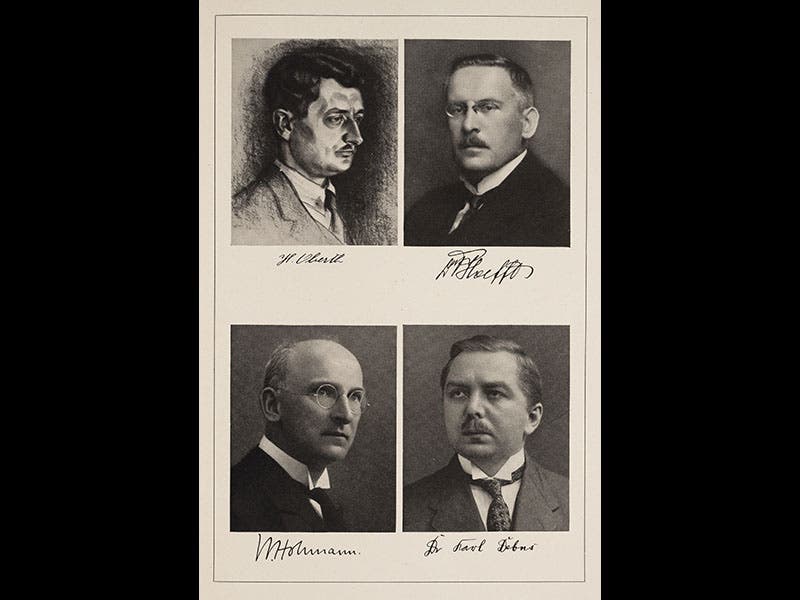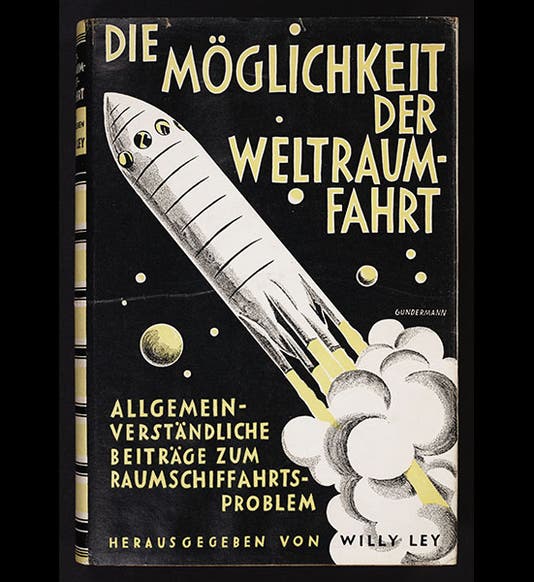Scientist of the Day - Willy Ley

Linda Hall Library

Linda Hall Library

Linda Hall Library

Linda Hall Library
Willy Ley, a German writer and rocket enthusiast, was born Oct. 2, 1906. As a young man, Ley read Hermann Oberth's pioneering book, Die Rakete zu den Planetenräumen (By Rocket to Planetary Space, 1923) and was immediately empassioned with the possibilities of space flight. In 1927, Ley helped organize the world's first amateur rocket society, the Verein für Raumschiffahrt (the Society for Spaceflight), and he started writing popular books and articles about space travel, an activity that would continue until his death in 1969.
The German enthusiasm for rockets in the late 1920s culminated in a landmark movie, Die Frau im Mond (Woman in the Moon, 1929), directed by Fritz Lang, which attempted, for the very first time, to show what it might be like to travel to the moon in a rocket (if you are thinking that George Méliès did it first, with his wonderful film, Le voyage dans la lune (A Voyage to the Moon, 1902), you are well versed in cinematic history, but those passengers travelled to the Moon in a projectile, not a rocket). The principal scientific adviser for Lang’s film was Oberth, but he got so bogged down in trying to produce a working rocket for the film's premiere (and failing to do so) that most of the design work for Die Frau im Mond was provided by others, principally Willy Ley. Fifty years later, in a reminiscence in the LA Times just after the first moon landing, Fritz Lang gave all the credit for the film's special effects to Ley, and indeed the article carried the headline: “Sci-Fi Film-maker's Debt to Rocket Man Willy Ley”. You can access here a 3-minute clip from the film, a pre-launch sequence showing some of Ley's handiwork (the original film was silent; the sound-track has been added, but it is not inappropriate). If you prefer a still shot, see the fifth image above.
Last year, we acquired a book edited by Ley, Die Möglichkeit der Weltraumfahrt (The Possibility of Space Travel, 1928), which included seminal papers on rocketry by Ley, Oberth, Walter Hohmann, and several other German rocket pioneers. The book has a fine graphic dust-jacket showing a rocket in flight (first image), photos of all 8 contributors, including Ley (third image, bottom left), and an illustration of a proposed design for an "electron rocket" (fourth image). We have quite a number of early rocket books in the Library, including all three volumes of Die Rakete (1927-29), the short-lived journal of the rocket society that Ley organized. The one significant early rocketry book that we lack is Oberth's Die Rakete zu den Planetenräumen, which we have been trying to acquire for some time. Perhaps it will have joined our collection by the time Oberth's birthday rolls around, next June 25. Oberth’s photo is at top left in the second image above.
Ley left Germany with the rise of Hitler and spent the last 30 years of his life in the United States, continuing to lobby for a rocket-powered space program, this time an American one. That too is a rich story, involving Chesley Bonestell, Werner von Braun, and Walt Disney, which we will save for another occasion. But we do want to mention here that Ley was an avid book collector, and like many with that disease, he designed his own bookplate. It was probably not easy to combine his two passions, dinosaurs and rockets, in one emblematic image; most of us will agree that he was remarkably successful (sixth image).
Dr. William B. Ashworth, Jr., Consultant for the History of Science, Linda Hall Library and Associate Professor, Department of History, University of Missouri-Kansas City. Comments or corrections are welcome; please direct to ashworthw@umkc.edu.








